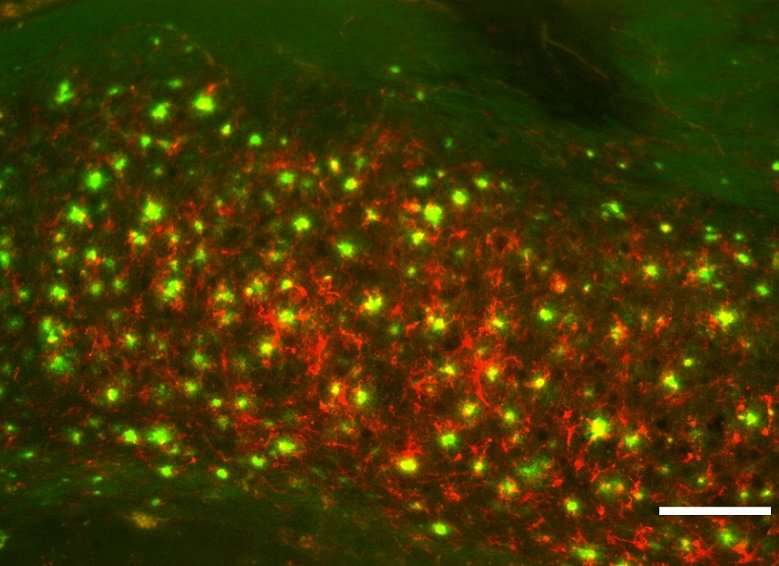Nanoparticles for the detection of Alzheimer's disease through magnetic resonance imaging

UPM researchers are involved in the development of a new biosensor that can be useful to achieve an early non-invasive diagnosis of Alzheimer's disease using magnetic resonance imaging.
The presence of iron deposits in the brain is a histopathological characteristic of patients with Alzheimer's disease. Thus, a team of researchers from diverse institutions, led by Milagros Ramos from the Centre for Biomedical Technology (UPM), has developed a new contrast agent for imaging resonance magnetic based on functionalized magnetic nanoparticles that could work as a biomarker for an early diagnosis of this disease.
This result can pave the way for new studies that develop methods of early and non-invasive diagnosis of this neurodegenerative disease.
Alzheimer's disease is a progressive neurodegenerative disease that affects about 47 millions of people worldwide. Today, the definitive diagnosis of this disease is only possible after the death of the patient, when we can determine the presence of tangles and amyloid plaques located in the brain parenchyma through histological techniques.
The current diagnostic practices include evaluations of the patient history to detect behavior changes and neuropsychiatric and neuroimaging evaluations that provide a probable diagnosis of the Alzheimer's disease.
Today, biomarkers provide neither a high accuracy of early diagnosis of the disease nor a suitable monitoring of the progress of the disease after using radioisotopes. Therefore, researchers are currently searching for new biomarkers that detect the presence of Alzheimer's disease using non-invasive methods.
Magnetic resonance imaging has better spatial resolution than the positron emission tomography (PET) and, in addition, it does not use radiotracers.
The presence of iron deposits in the brain is a histopathological characteristic of patients with Alzheimer's disease. However, the need for high concentration of accumulated iron and the extended periods of time to obtain the images make it difficult to use this technique in patients for the early detection of this disease. In this way, it seems necessary to develop contrast agents that allow us to achieve greater sensitivity in magnetic resonance for the detection of incipient iron accumulation associated with amyloid plaques in the brain of patients with Alzheimer's disease.
In order to make progress in the search of non-invasive biomarkers for an early detection of the Alzheimer's disease, Dr. Milagros Ramos from CTB-UPM has led a team of researchers from Severo Ochoa Molecular Biology Center (UAM-CSIC), Universidad Carlos III, Gregorio Marañón Health Research Institute (IiSGM) and CIBER of Mental Health (CIBERSAM) and CIBER of Bioengineering, Biomaterials and Nanomedicine (CIBER-BBN).
The study describes the presence of accumulated iron and the protein that stores iron (ferritin) in a hippocampal area of transgenic mice for Alzheimer's disease. These accumulations of iron and ferritin are observed around the amyloid plaques which are characteristics of the disease.
This finding helped develop a contrast agent for magnetic resonance imaging based on the functionalization of magnetic particles with an antibody that recognizes ferritin. Thus, researchers showed that, through histological analysis, the new nanoconjugate binds to the ferritin accumulation in a particular way in transgenic mice for the Alzheimer's disease.
Milagros Ramos explains, "the accumulation of functionalized nanoparticles in the specific area cause a significant decrease in certain values obtained through magnetic resonance, this indicates that the new contrast agent can be useful in the future for an early and non-invasive diagnosis of this pathology through magnetic resonance."
More information: Tamara Fernández et al. Functionalization and Characterization of Magnetic Nanoparticles for the Detection of Ferritin Accumulation in Alzheimer's Disease, ACS Chemical Neuroscience (2018). DOI: 10.1021/acschemneuro.7b00260



















